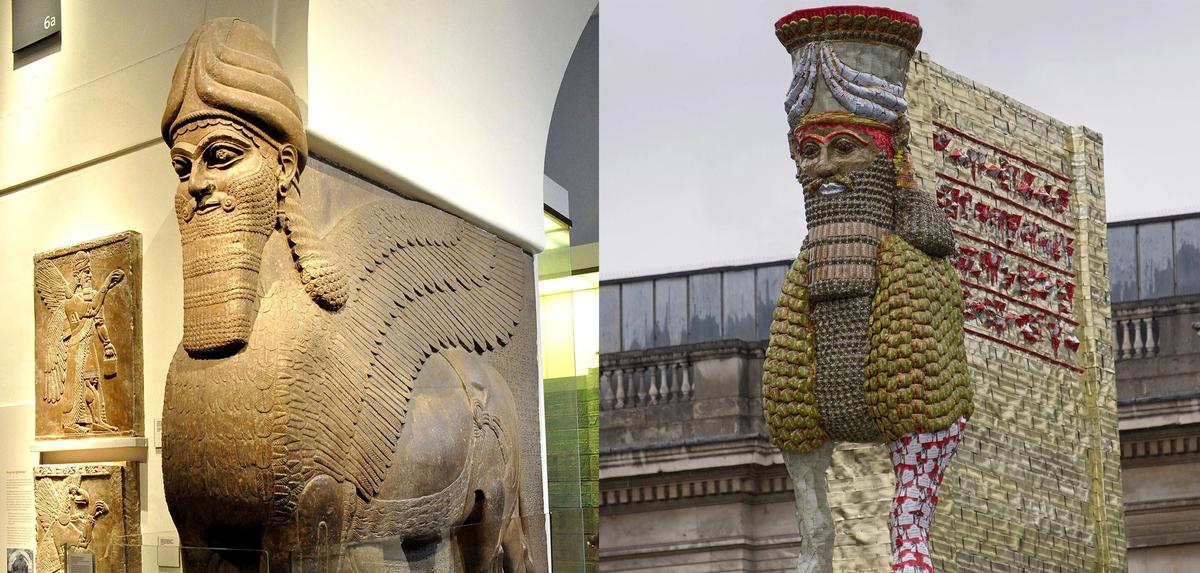The Chicago-based artist and academic Michael Rakowitz says that he hopes his Assyrian lamassu sculpture, which stood on the Fourth Plinth in London’s Trafalgar square from 2018 to 2020, could be shared with an institution in Iraq. The plan “involves co-custodianship with an Iraqi institution still to be determined”, Rakowitz says.
The piece, entitled The Invisible Enemy Should Not Exist (2018), recreated an Assyrian winged bull with a human head, known as a lamassu, made in the ancient Mesopotamian city of Nineveh in 700 BCE but destroyed by Islamic State (Isis) in 2015.
An arrangement set up late 2020, Rakowitz says, might come to fruition which involves giving the fourth-plinth bull to Iraq as part of a cultural exchange with Tate Modern. But as part of the deal driven by Rakowitz, the British Museum should return one of its two Assyrian lamassu sculptures which were discovered in Nineveh by the Victorian archaeologist Sir Austen Henry Layard.
According to The Guardian, Rakowitz’s proposal is expected to be on the agenda of a visit to London in February by Iraq’s new minister of culture, Ahmed Fakkak, when he is expected to be given a tour of the British Museum.
Tate Modern approached Rakowitz in the summer of 2019 to explore the possibility of custodianship of the Assyrian lamassu. “My initial desire was to donate it to Iraq to stand sentry at the Nergal Gate in Nineveh where the original stood until Daesh destroyed it in 2015. But as my conversations with people in Iraq evolved, it became clear that this would let the UK off the hook, and while people I spoke to expressed admiration for my sculpture, they said what should return to Iraq is one of the originals held in the British Museum,” he tells The Art Newspaper.
Rakowitz says that he started to realise that the Fourth Plinth piece was a “diasporic object with wings”. He asked Tate Modern to share the work equally with an Iraqi institution so that “the work ‘flies’ between both places, mirroring the situation of so many Iraqis who cannot return permanently, and keeping alive the tension of where a work belongs, and even moreso, who belongs to an artwork”.
He adds: “It allows for the work to continue to be made, and continuously sculpted by the pressures of our world. In fact for me, I define sculpture as pressure exerted on a material, as hands press clay to shape it, or hammer hits chisel, which hits stone to remove material.”
Rakowitz says: “One of the informal parts of the agreement was that the Tate Modern would assist me in exerting pressure on the British Museum to return one of their lamassu to Iraq. With the acquisition of my work, London has one lamassu too many, and so it is time to give one of the originals back to the Iraqi people.”
Tate says in a statement: “Tate is always looking to advance the collection, both in terms of the range of works we acquire as well as sustainable and dynamic ways to collect. But we would not discuss any potential acquisitions until they have formally joined the collection.” The Art Newspaper understands that the Tate is not involved in any conversations with the British Museum which has not responded to a request for comment.


